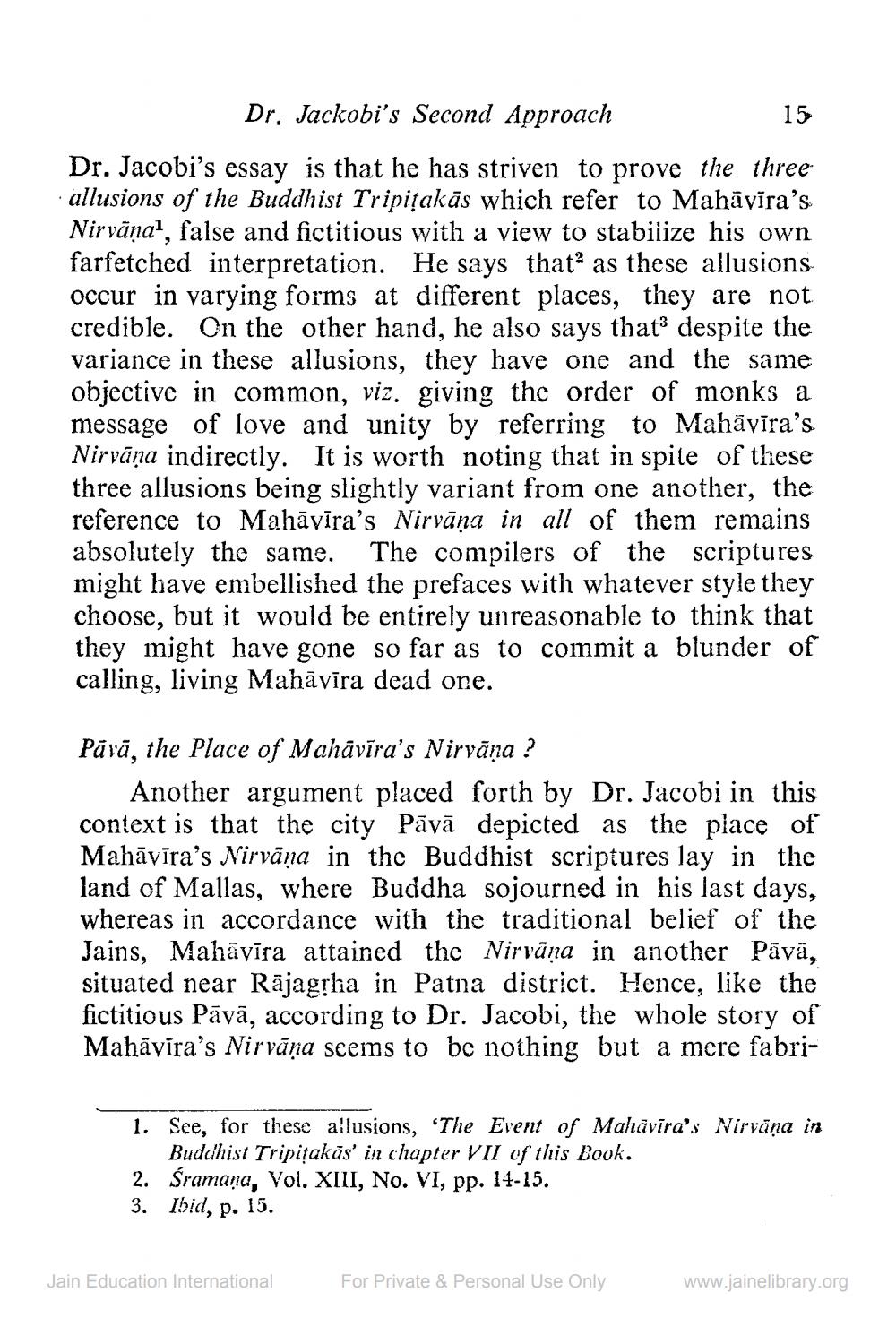________________
Dr. Jackobi's Second Approach
15 Dr. Jacobi's essay is that he has striven to prove the three allusions of the Buddhist Tripițakās which refer to Mahāvīra's Nirvānal, false and fictitious with a view to stabilize his own farfetched interpretation. He says that as these allusions occur in varying forms at different places, they are not credible. On the other hand, he also says that despite the variance in these allusions, they have one and the same objective in common, viz. giving the order of monks a message of love and unity by referring to Mahāvīra's Nirvāņa indirectly. It is worth noting that in spite of these three allusions being slightly variant from one another, the reference to Mahāvīra's Nirvāṇa in all of them remains absolutely the same. The compilers of the scriptures might have embellished the prefaces with whatever style they choose, but it would be entirely unreasonable to think that they might have gone so far as to commit a blunder of calling, living Mahāvīra dead one.
Pārā, the Place of Mahāvīra's Nirvāṇa ??
Another argument placed forth by Dr. Jacobi in this context is that the city Pāvā depicted as the place of Mahāvīra's Nirvāna in the Buddhist scriptures lay in the land of Mallas, where Buddha sojourned in his last days, whereas in accordance with the traditional belief of the Jains, Mahāvīra attained the Nirvūņa in another Pāvā, situated near Rājagrha in Patna district. Hence, like the fictitious Pāvā, according to Dr. Jacobi, the whole story of Mahāvīra's Nirvāṇa seems to be nothing but a mere fabri
1. See, for these allusions, 'The Event of Mahavira's Nirvana in
Buddhist Tripitakās' in chapter VII of this Book. 2. Śramana, Vol. XIII, No. VI, pp. 14-15. 3. Ibid, p. 15.
Jain Education International
For Private & Personal Use Only
www.jainelibrary.org




